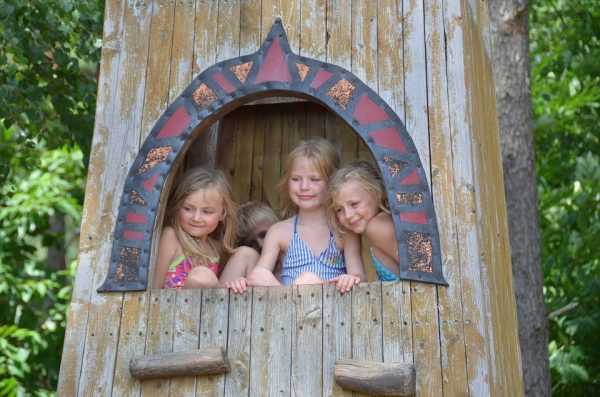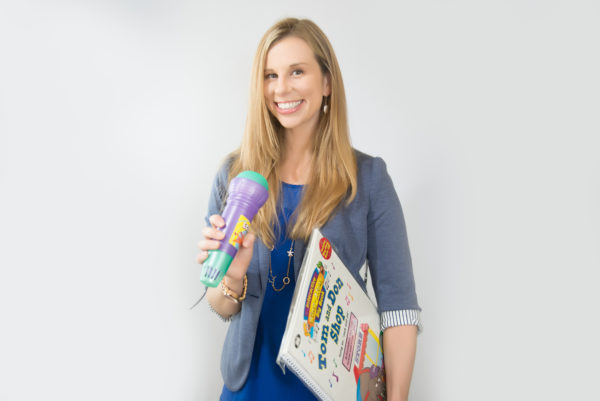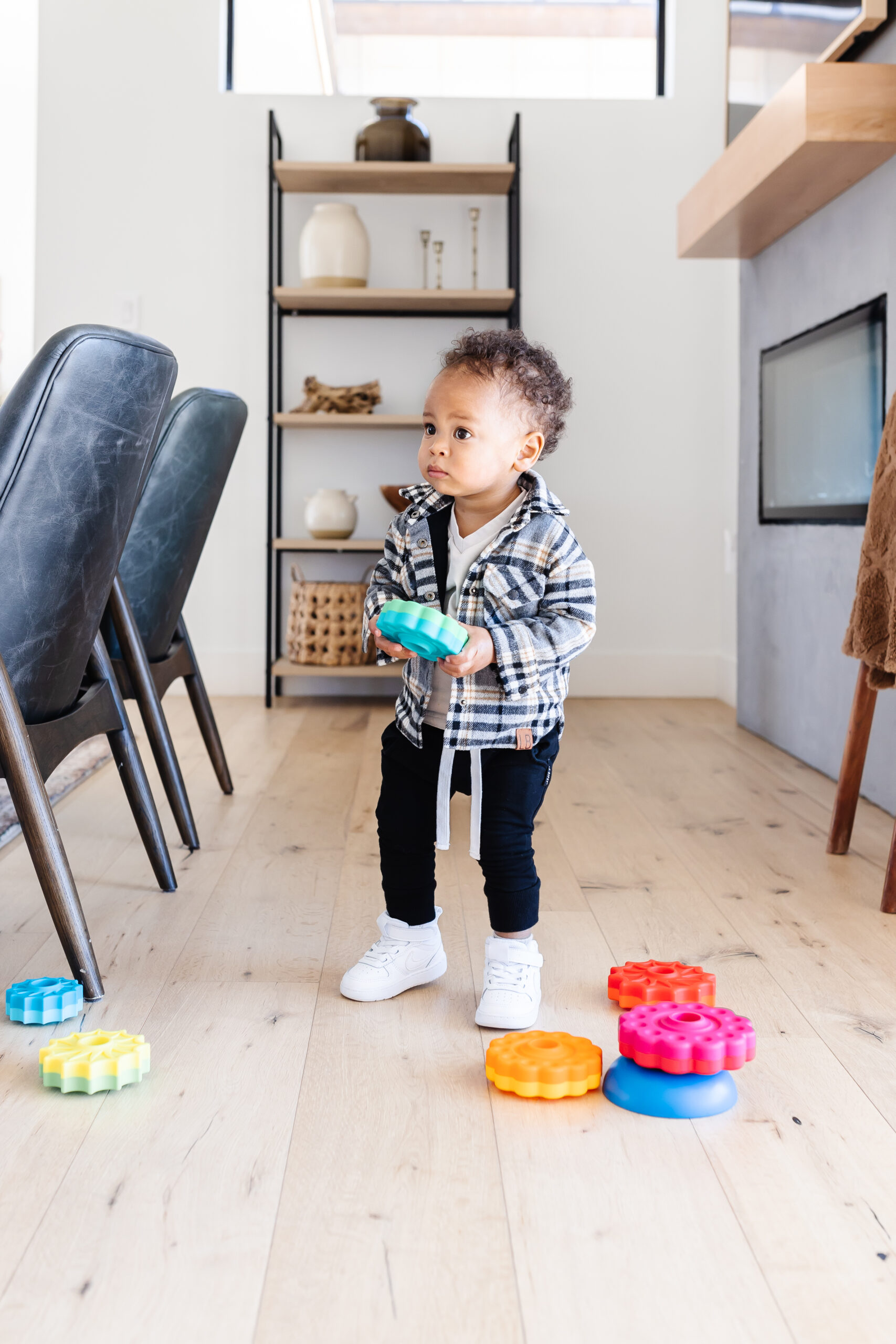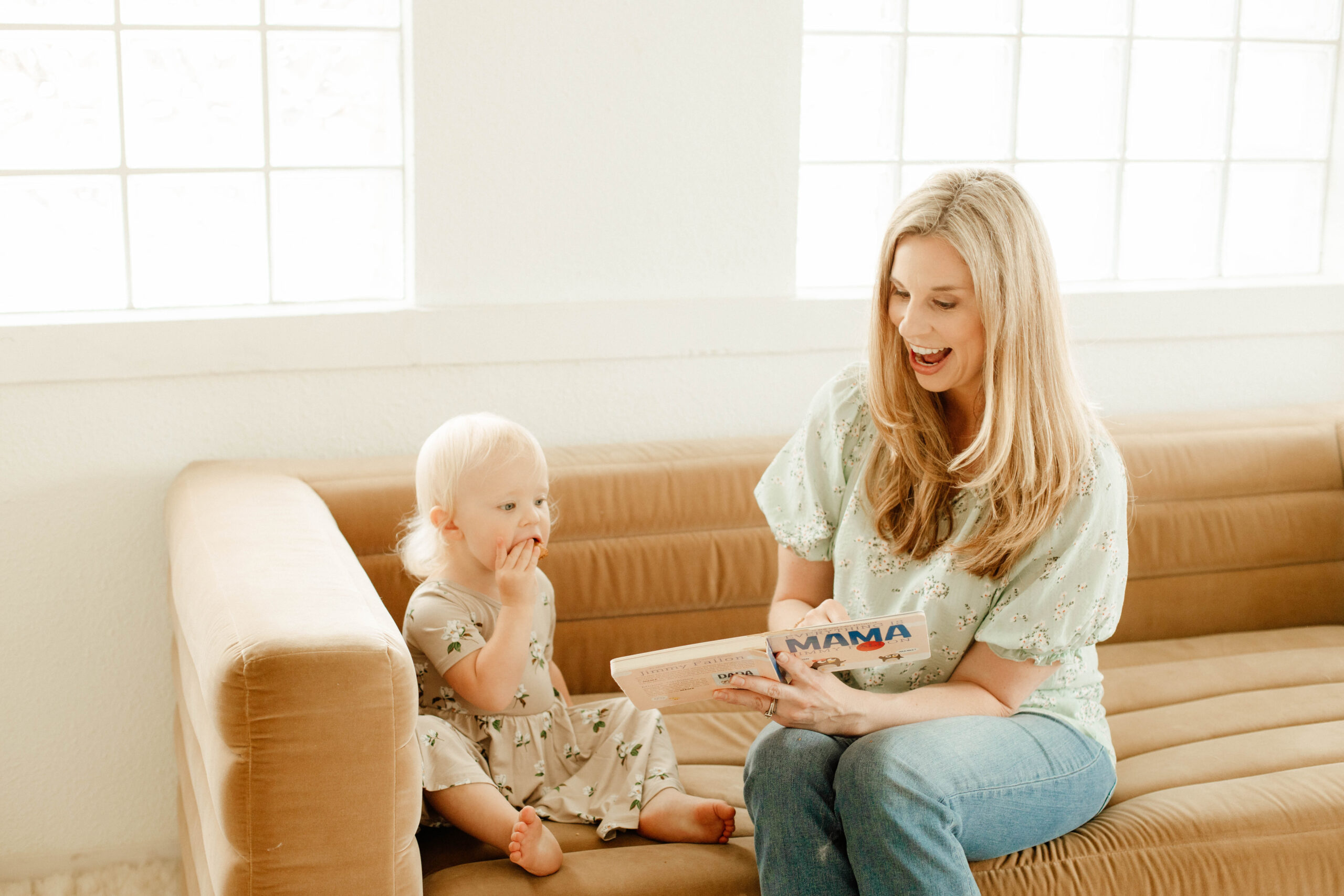
Speech and language therapy with young children can sometimes looks like “just playing.” That’s because play and language go together. In addition to play being the primary vehicle for learning in early childhood, let’s talk more about how play and language go hand in hand.
Play and Language
A word is a symbol for the object it represents. Children’s play skills are intimately related to their understanding of symbols. If a child uses a towel as a “blanket” and playfully pretends to go to sleep, they are using that towel as a symbol for the blanket. Other examples include pretending a “block” is a phone or a “stick” is a car. This understanding of the use of symbols develops alongside the understanding that words are symbols for objects and ideas.
Language Development
Between 18-24 months, children produce simple sentences. As children learn more about the world, they discover more about the relationships between items, places, and people. Using word combinations give toddlers a way to express these relationships (ex: “sock on,” “more crackers,” etc.) As children combine more words, more complex relationships are reflected through their play. For example, a child may feed their baby doll, burp her, put her pajamas on, then put her to bed.
During pretend play, children will often “take on the roll” of a character. Researchers have found that during play, toddlers duplicate the way adults talk to babies and the way babies talk to adults. When toddlers play the role of the “mommy,” they increase their pitch and talk in shorter sentences. They also talk more and ask more questions. Similarly, when toddlers pretend to be the “baby,” they talk less and use high pitched voices. This ability to use language to stand for make-believe relationships is another sign of your toddler’s increasing language and play skills.
Play and language are interconnected. Children’s pretend play is often the origin of their earliest “narratives” (Golinkoff & Pasek, 1999). Engaging in pretend play with your child gives them the model and structure for telling a story. These stories help them develop early literacy skills. Remember to follow your child’s lead and become a “partner” instead of a “director” during play.
Here are some tips to follow when engaging in pretend play with your little one
- Balance your turns- Don’t make all the suggestions or do all the talking. Balance turns with your child.
- Create “problems” during play – Pretend the tea for your tea party is “too hot” and encourage your child to come up with a solution (blow on it, pretend to throw ice cubes in the cup “clink!”). Good stories have conflicts that need a resolution. Practice early versions of this during pretend play.
- Wait – Before offering a suggestion for what to do. Give your child a chance to come up with an idea on their own.
- Expand your child’s play – You can “partner” with your child by expanding on the play scene they are interested in.
- Have fun- Use funny voices and fun noises. Kids are already doing this. Join in the play and don’t be afraid to get silly!
Next time you are having a tea party with your little one, keep in mind all that they are learning about language, literacy, and problem-solving. All while having fun and getting to spend time with you!
References:
Golinkoff, R. M., & Hirsh-Pasek, K. (1999). How babies talk: the magic and mystery of language in the first three years of life. New York: Plume.
“Play with Language and Speech.” In Child Discourse, edited by S. Ervin-Tripp and C. Mitchell Kernan , 24-47. New York: Academic Press, 1997.

Brooke is the owner of The Speech Dynamic PLLC, where she provides play based and family centered speech therapy in the Houston area, She is the co-creator of “Wiggle time,” an interdisciplinary curriculum for pediatric therapy. She has presented at The North Carolina Exceptional Children’s Conference regarding embedding language into routines. She has also shared her expertise on a panel for The University of North Carolina at Chapel Hill. Brooke has a passion for helping families understand the importance of play for speech & language development.






